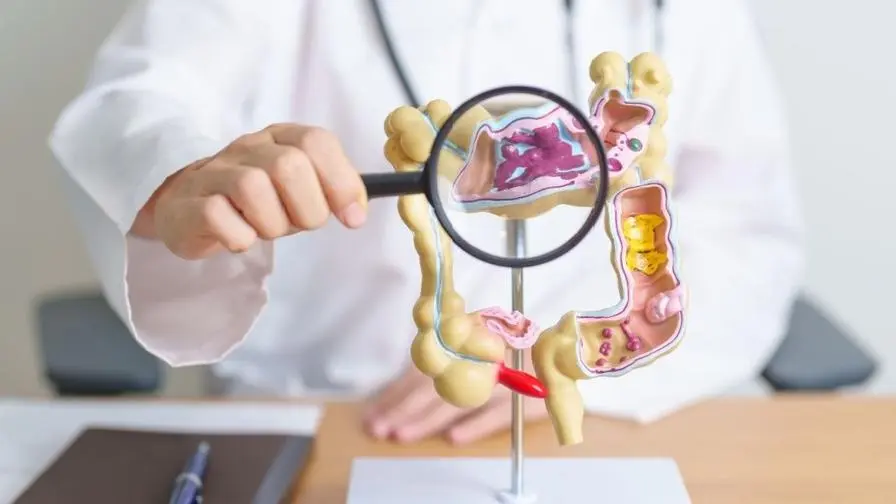Every one of them dirtier than a toilet? Doctors reveal the top 10 "dirtiest daily necessities": most in bathrooms and kitchens

Every one of them dirtier than a toilet? Doctors reveal the top 10 “dirtiest daily necessities”
Daily necessities in life may seem harmless, but may they contain more germs than a toilet? Dr. Huang Xuan, an expert in critical care medicine, pointed out in a social media post that due to the muggy, humid and rainy summer in Taiwan, everywhere in the home can easily become a breeding ground for germs; especially if the living environment has the following daily necessities, you should develop the habit of washing your hands frequently after touching them. To prevent pathogens from invading the body:
Shower head. The outlet hole of the shower head will accumulate scale every three months. If the shower head is not cleaned, the bacteria content may be higher than that of the toilet water, which is equivalent to “bathing with toilet water”. Bacteria can penetrate into skin, hair, ears and eyes through tap water from showerheads, becoming a route of bacterial infection.
Washing machine. If the washing machine is not cleaned regularly, clothes can easily become contaminated with bacteria and cause cross-infection. Studies have found that an estimated 100 million E. coli bacteria can be found in a washing machine after washing underwear. The dirt in the washing machine mainly comes from laundry detergent or washing powder. Excessive laundry detergent residue in the washing machine can easily form dirt, especially in the mezzanine and chassis of the washing machine. There may be more dirt than the bacteria in the toilet bowl.
Mobile phone. Mobile phones may be contaminated with many germs in the environment; especially when you slide your phone while going to the toilet, the bacteria on the screen may be 400 times more dirty than the toilet. Studies have also confirmed that there are indeed bacteria harmful to humans on mobile phones, including Staphylococcus epidermidis, Staphylococcus aureus, and Escherichia coli.
Mouse/Keyboard. Research points out that there are 20,598 times more bacteria on the keyboard than on the toilet seat, which may harbor pathogenic bacteria such as Staphylococcus aureus; in addition, the bacteria on the mouse are 45,670 times more than on the toilet flush handle.
Bath towel/towel. According to research, there are bacteria harmful to the human body on towels, including nearly 90 times more E. coli, reaching 17 million after one day of use; and 87 million Staphylococcus aureus in towels after three days of use. After using the towel for a week, the Candida content reached 94 million.
Toothbrush. There are more bacteria on the toothbrush than on the toilet, even tens of millions. The main reason is that the bathroom is humid and unventilated, and the toothbrush can easily become a breeding ground for bacteria. In addition, if the toothbrush is not cleaned correctly, plaque can easily adhere to the bristles, which may also lead to bacteria. Breed.
Cutting board. According to research, after an average household uses a cutting board for 7 days, there are more than 200,000 germs per square centimeter. On a wooden cutting board that has been used for 2 months, the total number of germs on it is 12 times that of a toilet. In other words, chopping on a cutting board is even dirtier than chopping on the toilet.
Rag. A British study found that the bacterial content on rags is as high as 875 million per square centimeter, even more than in toilets; these bacteria include pathogenic E. coli, Staphylococcus aureus, Streptococcus, etc., which may have a negative impact on the human body. of pathogens.
Refrigerator. The refrigerator door handle is considered the dirtiest place in the pantry. The investigation found that it contained bacteria such as E. coli and Pseudomonas. Pseudomonas is a type of bacteria spread through feces and may cause pneumonia and other diseases. For vulnerable populations, the bacterium may increase the risk of human disease.
Light switch. Light switches are one of the frequently touched daily items in the home; however, seemingly ordinary switches may become a breeding ground for bacteria and viruses. Light switches are often touched by fingers and are therefore prone to contamination with bacteria, especially in bathrooms.
Don’t just do spring cleaning during the Chinese New Year! Intensive care doctor reveals “cleaning tips” for daily necessities
To sum up, Dr. Huang Xuan said that people can clean the above-mentioned daily necessities through the following methods to keep the indoor spaces in their homes tidy and avoid pathogens from harming their health:
Bathroom/Toiletries
Shower head: Use a basin, pour warm water into it, add a spoonful of “sodium percarbonate” (also known as activated oxygen bleaching powder), wait until it dissolves, then put the shower head in and soak it for about 30 minutes. After soaking, use an old toothbrush to remove nearby dirt, and finally rinse with water.
Bath towels/towels: Wash towels at least once a week or replace them with clean towels. If towels are used to hanging in the bathroom, make sure the bathroom is well ventilated and has good moisture removal functions. If you do not wash it after use, you should dry it in a sunny or ventilated place to avoid the growth of bacteria when the towel is wet.
Toothbrush: Replace your toothbrush every 6-8 weeks, even if the bristles are not deformed. After brushing your teeth, thoroughly clean the food residue and toothpaste from the brush head. Remember to place the toothbrush upright to let it dry naturally. If the root of the toothbrush changes color, it means excessive accumulation of dirt and should be replaced immediately.
Washing machine: First turn on the tank cleaning mode or general cleaning mode of the washing machine, and turn it to the highest water level. Then add commercially available washing machine detergent or sodium percarbonate, dissolve it in warm water and pour it into the washing machine. If there is too much dirt, you can pause in the middle and remove it before continuing. After the tank is washed and dehydrated, use a wet towel to wipe the dirt at the bottom, and then continue washing with the full water level washing mode until there is almost no dirt.
Kitchen supplies
Cutting boards: Use dishwashing liquid, salad detergent and other food detergents to scrub them. Avoid using steel brushes. In addition, avoid rinsing with boiling hot water, as the protein in food residues solidifies when exposed to heat, making it difficult to wash away. After washing, place it in a ventilated place to dry to avoid mold; if you want additional disinfection, you can use 75% alcohol or 200 ppm bleach.
Refrigerator: Clean the refrigerator door handle regularly with alcohol or wet wipes to avoid bacterial growth. Wash your hands frequently after touching handles and avoid touching your face.
Rag: First soak the rag in diluted bleach (the ratio of bleach to water is 10 ml: 1 liter), or boil it in boiling water. Wring out the sock cloth with your hands and let it dry in the sun.
3C product category
Mobile phones: Use alcohol wipes or wet wipes to clean mobile phones in three situations: when returning home from outdoors, before eating, and after using the toilet.
Mouse: Use alcohol to wipe the surface of the mouse, paying attention to cleaning the gaps between the scroll wheel and buttons.
Keyboard: Wipe the surface of the keyboard with alcohol swabs or rags, and use cotton swabs to clean the dust under the keys.
The above ten commonly used daily necessities may seem insignificant, but the pathogenic bacteria contained in them may pose a considerable threat to the human body. Dr. Huang Xuan reminds us that not only do we need to pay attention to home cleanliness during the New Year and holidays, but we should also clean up daily necessities on time in order to minimize the threat posed by pathogens.
Source:
Further reading:





